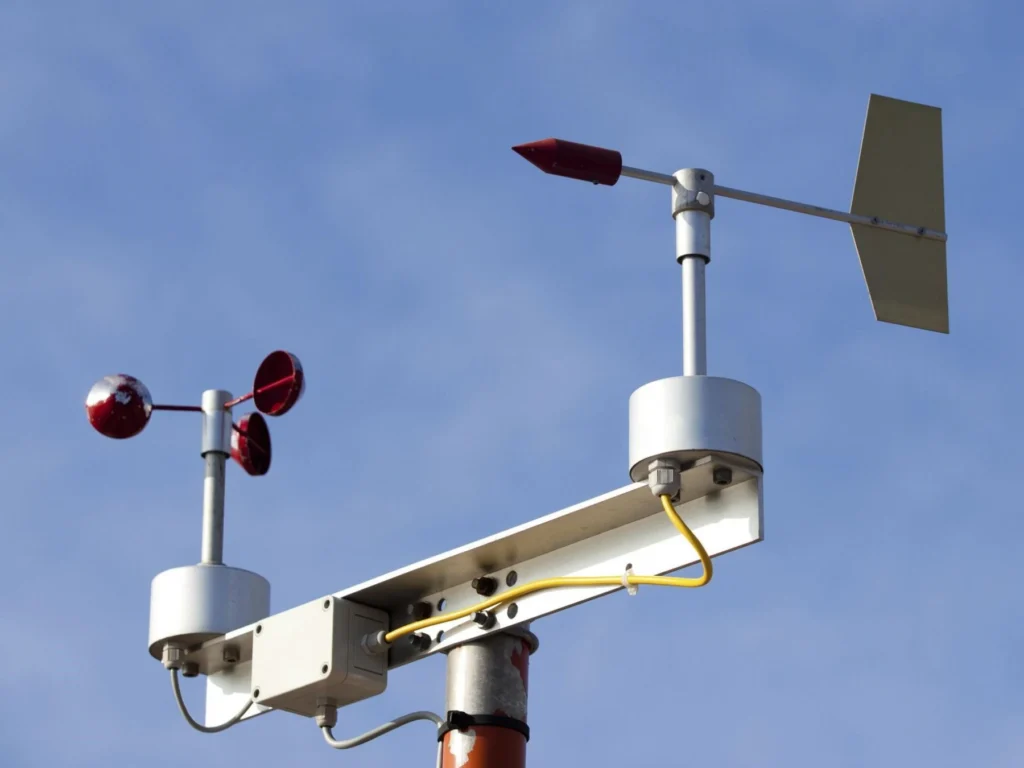
# Wind Speed Measurement Instrument Overview
Wind speed measurement is a critical aspect of various fields, including meteorology, aviation, and environmental monitoring. Accurate measurement of wind speed helps in predicting weather patterns, ensuring safe flight operations, and assessing the potential for wind energy generation. This article provides an overview of the instruments used to measure wind speed, their working principles, and applications.
## Anemometers: The Primary Instrument for Wind Speed Measurement
Anemometers are the most commonly used instruments for measuring wind speed. They come in various types, each suited for specific applications. The primary types of anemometers include:
### Cup Anemometers
Cup anemometers consist of three or four cups mounted on horizontal arms, which are attached to a vertical shaft. As the wind blows, the cups rotate, and the speed of rotation is proportional to the wind speed. The rotational speed is then converted into an electrical signal, which can be displayed or recorded.
### Vane Anemometers
Vane anemometers, also known as propeller anemometers, use a propeller mounted on a horizontal axis. The propeller rotates when exposed to wind, and the rotational speed is measured to determine the wind speed. These anemometers are often used in handheld devices for quick and easy measurements.
### Hot-Wire Anemometers
Hot-wire anemometers measure wind speed based on the cooling effect of the wind on a heated wire. The wire is heated to a constant temperature, and as the wind passes over it, the wire cools down. The amount of cooling is proportional to the wind speed, and this change in temperature is used to calculate the wind speed.
### Ultrasonic Anemometers
Ultrasonic anemometers use ultrasonic sound waves to measure wind speed. They consist of multiple pairs of transducers that send and receive ultrasonic pulses. The time it takes for the pulses to travel between the transducers is affected by the wind speed, and this information is used to calculate the wind speed and direction.
## Applications of Wind Speed Measurement Instruments
Wind speed measurement instruments are used in a wide range of applications, including:
### Meteorology
In meteorology, accurate wind speed measurements are essential for weather forecasting and climate studies. Anemometers are used in weather stations to provide real-time data on wind speed, which is crucial for predicting storms, hurricanes, and other weather phenomena.
### Aviation
In aviation, wind speed measurements are critical for ensuring the safety of aircraft during takeoff and landing. Airports are equipped with anemometers to monitor wind conditions and provide pilots with up-to-date information.
### Environmental Monitoring
Environmental monitoring involves assessing the impact of wind on ecosystems and human activities. Wind speed measurements are used to study air pollution dispersion, wind erosion, and the effects of wind on vegetation.
### Wind Energy
The wind energy industry relies heavily on accurate wind speed measurements to assess the potential for wind power generation. Anemometers are used to measure wind speeds at potential wind farm sites to determine the feasibility and efficiency of wind turbines.
## Conclusion
Wind speed measurement instruments, particularly anemometers, play a vital role in various fields. From predicting weather patterns to ensuring safe aviation operations and assessing wind energy potential, these instruments provide essential data that helps in making informed decisions. Understanding the different types of anemometers and their applications is crucial for selecting the right instrument for specific needs.
Keyword: instrument to measure wind speed